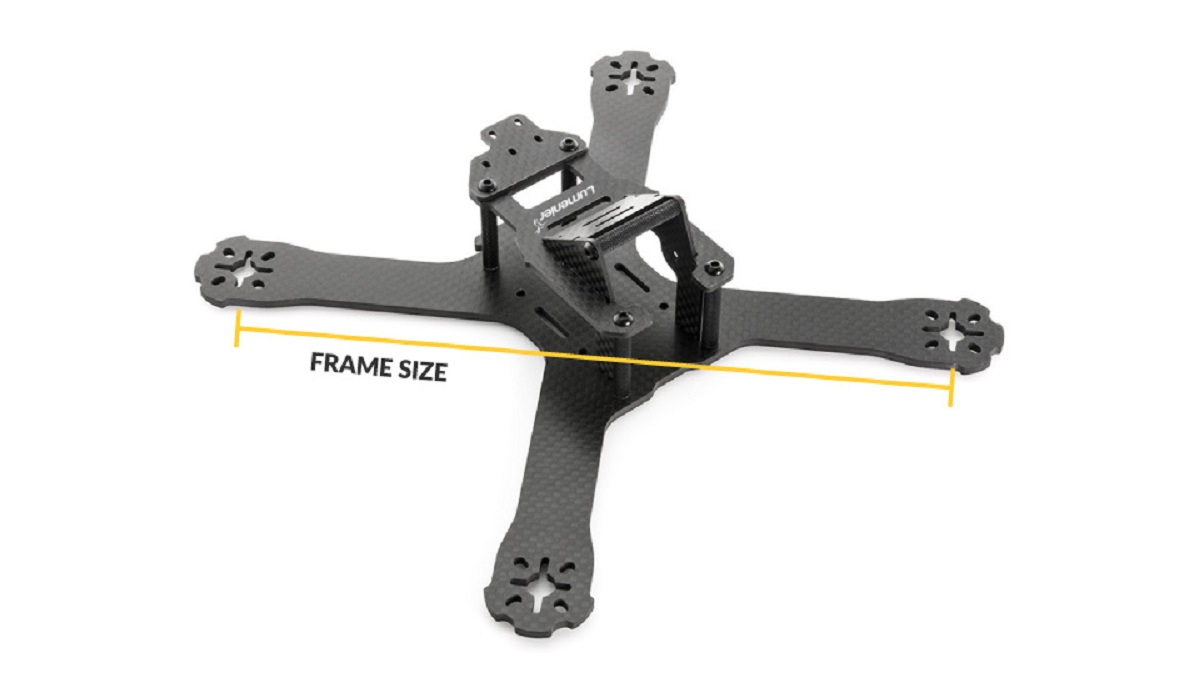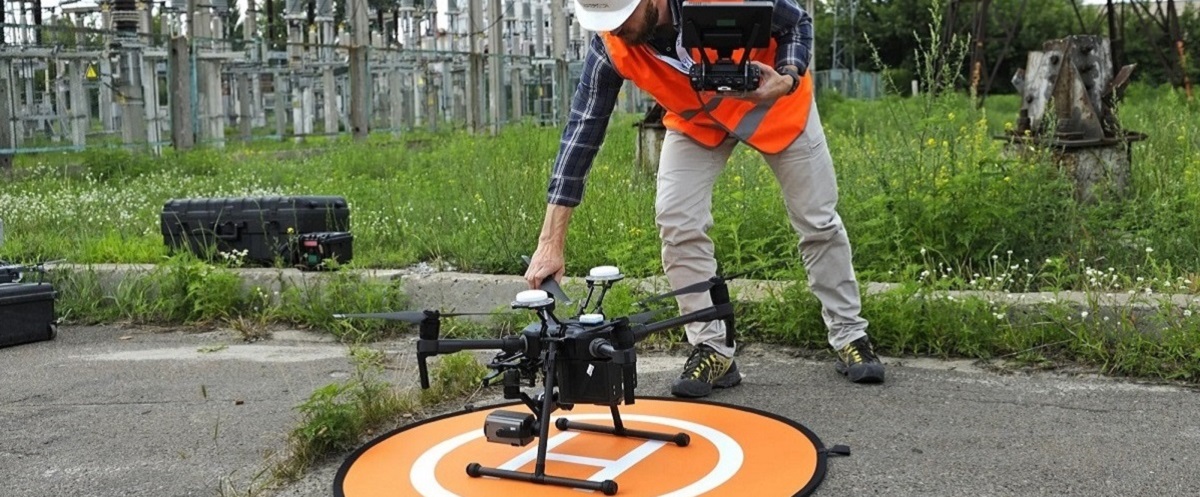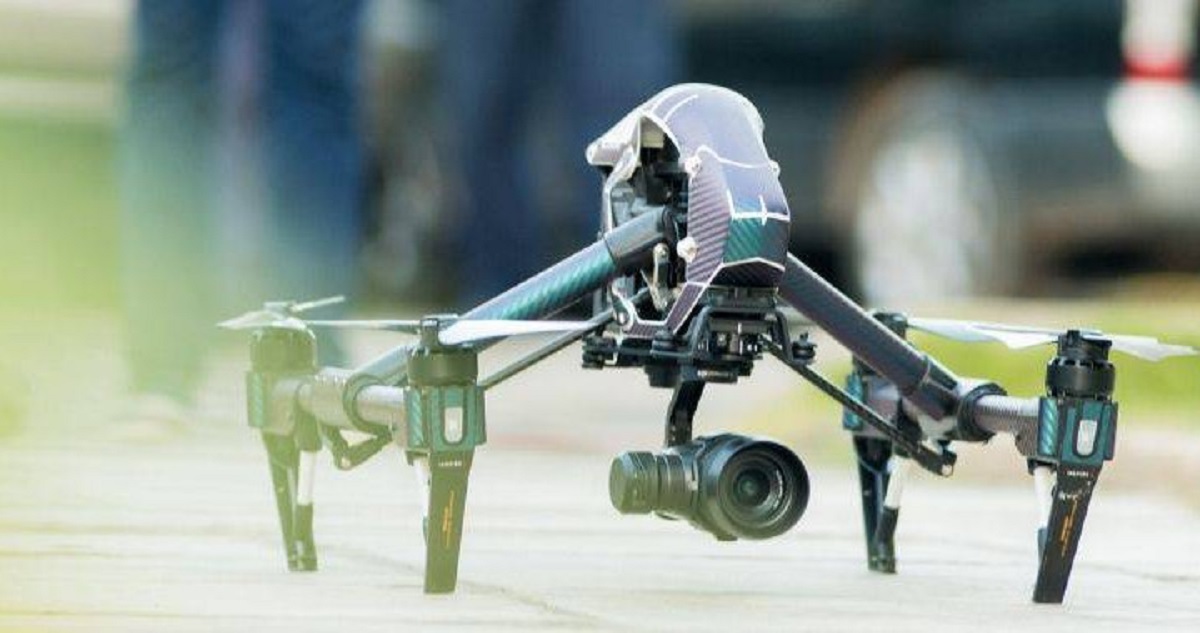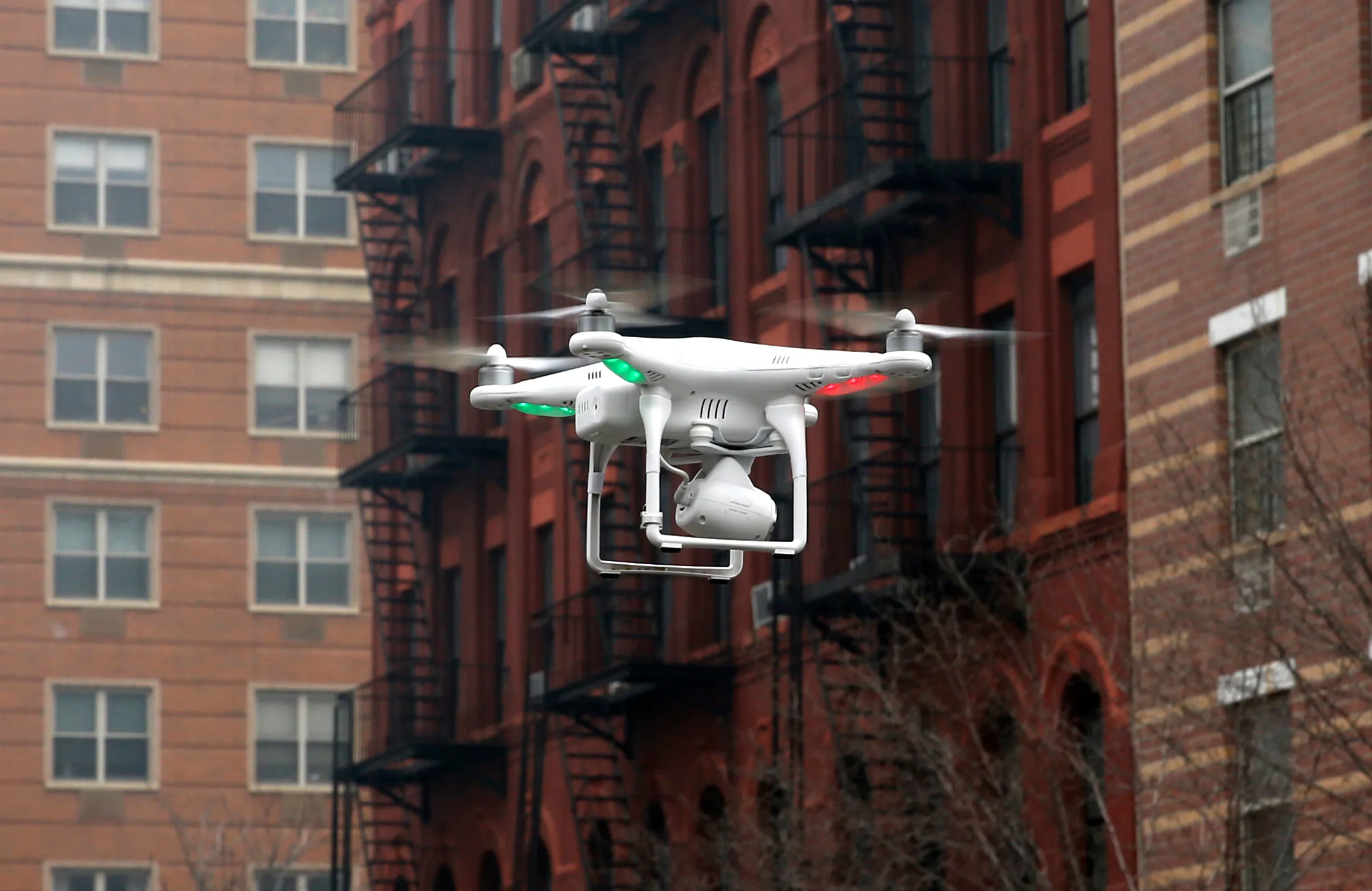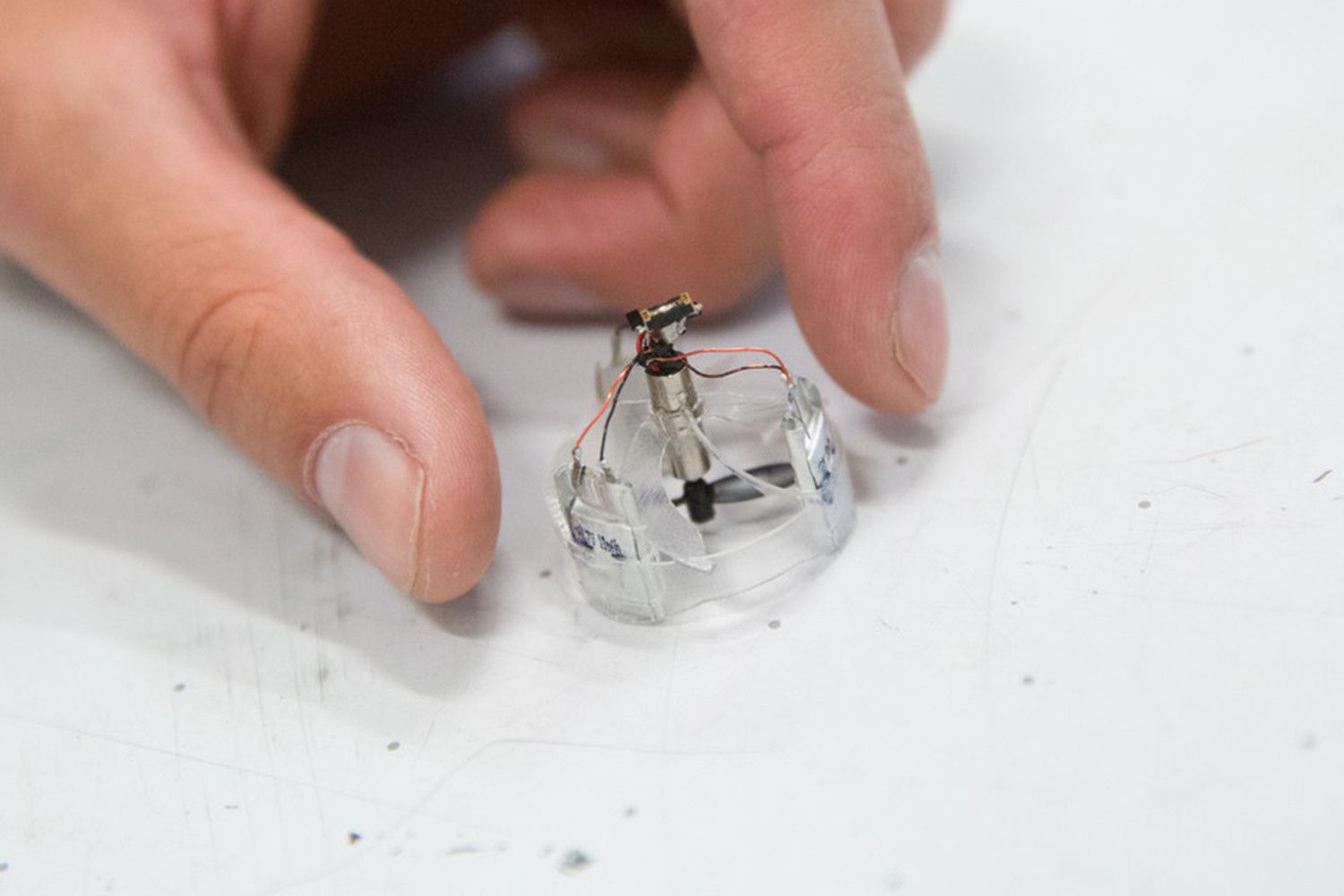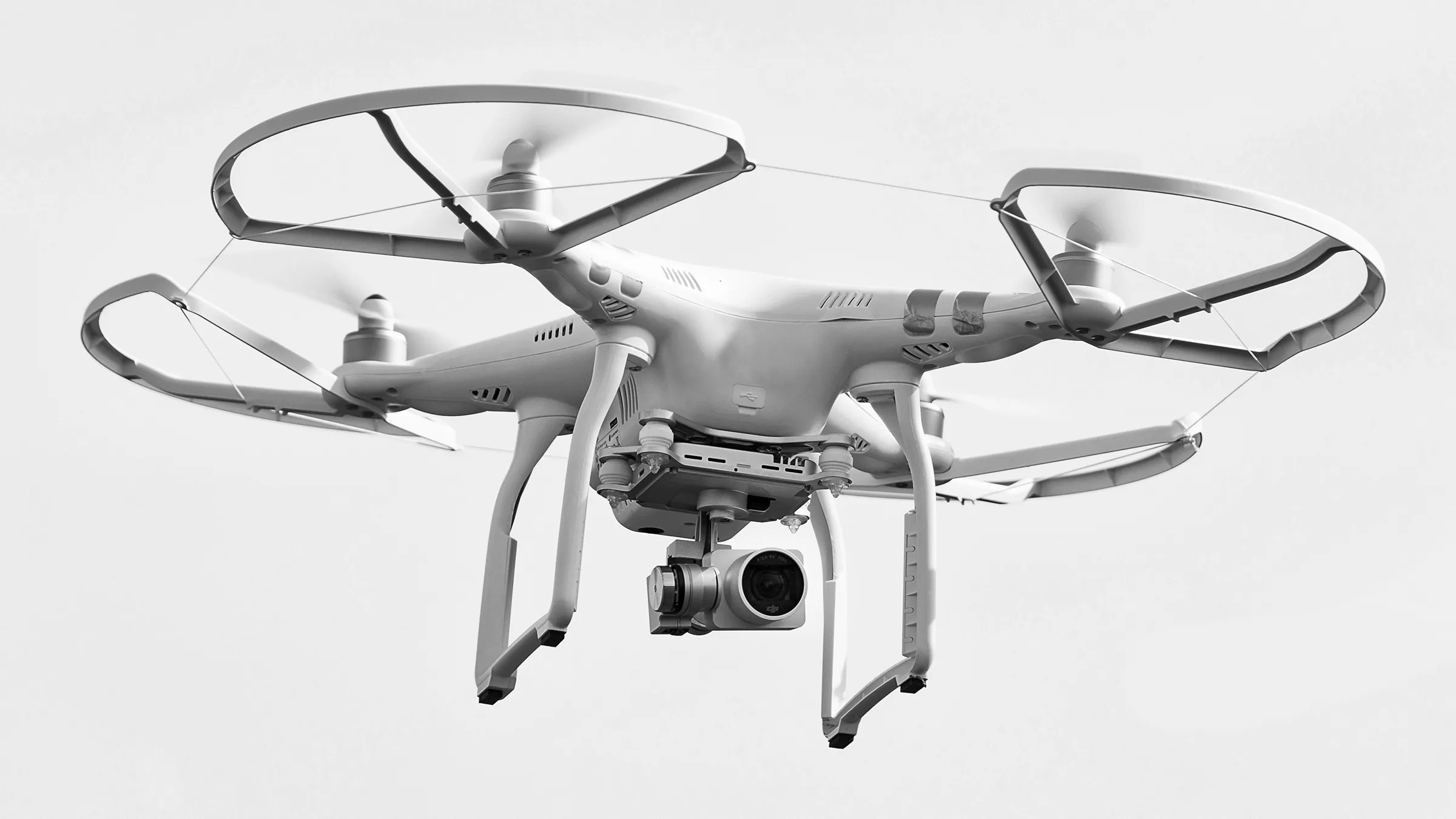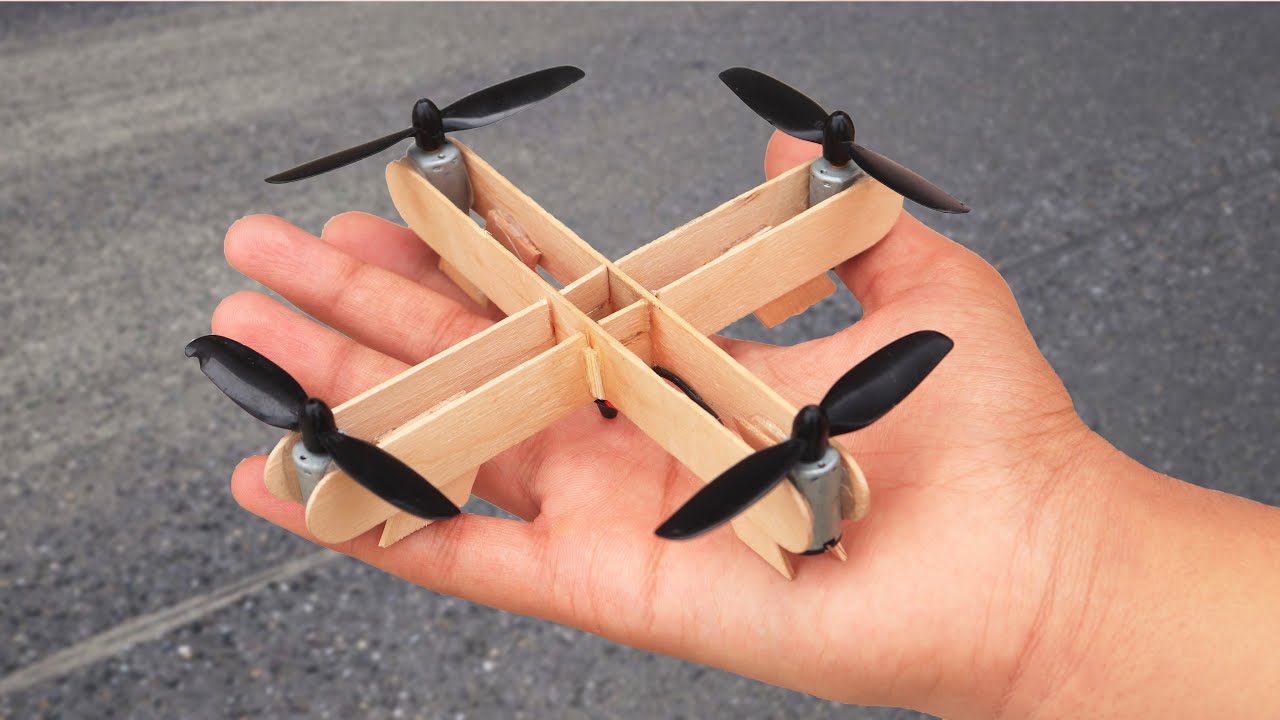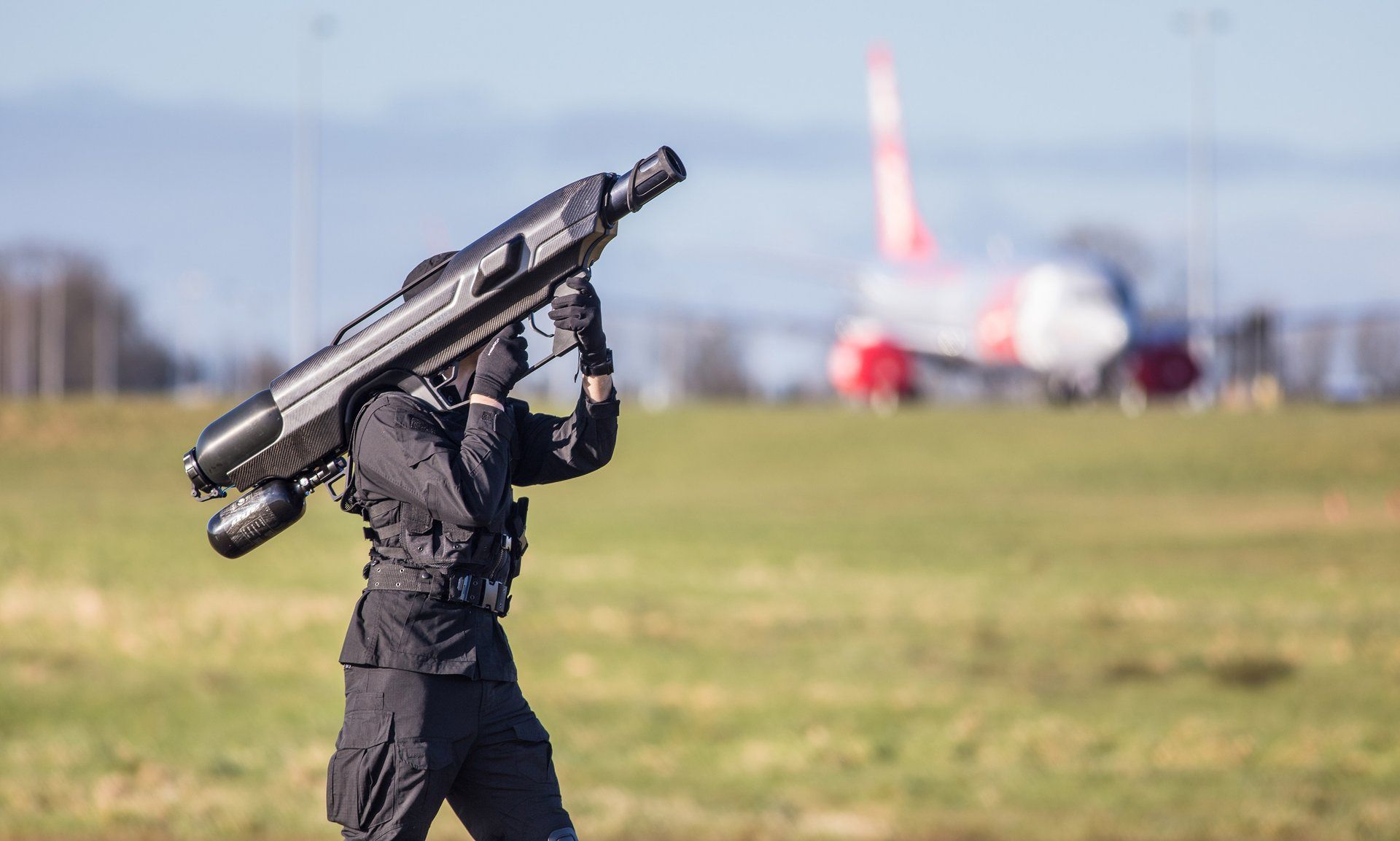Introduction
Welcome to the world of drones, where technology takes flight and aerial photography reaches new heights. Drones have become increasingly popular in recent years, offering a unique perspective and endless possibilities for enthusiasts and professionals alike. However, not all drones are created equal, and one crucial aspect to consider is their size. In this article, we will dive into the importance of measuring drone size and explore the various factors that contribute to a drone’s overall dimensions.
When it comes to drones, size matters for several reasons. Firstly, understanding the physical dimensions of a drone is essential for transportation and storage purposes. Whether you’re traveling to a picturesque location or simply want to store your drone safely at home, knowing its size will help you determine the right storage case or backpack that can accommodate it without any hassle.
Additionally, measuring drone size is crucial for regulatory compliance. Different countries have specific guidelines and restrictions regarding the size of drones that can be operated in certain areas. By knowing the dimensions of your drone, you can ensure that you’re flying within the prescribed limits and avoiding any potential legal issues.
Moreover, drone size plays a significant role in the maneuverability and flight performance of the aircraft. Smaller drones tend to be more agile and can navigate through tighter spaces with ease, while larger drones may offer more stability and payload capacity for specialized purposes such as aerial surveying or videography.
However, it’s important to note that drone size encompasses more than just physical dimensions. Alongside the physical size, parameters such as weight, flight time, range, camera capabilities, battery voltage and capacity, motor size and power, and maximum payload capacity all contribute to a drone’s overall size.
In this article, we will explore each of these aspects in detail, providing you with the knowledge and understanding to measure a drone’s size beyond its physical dimensions. By the end, you’ll have a comprehensive understanding of how to gauge the size of a drone and make informed decisions when choosing the right one for your needs.
Why is it important to measure drone size?
Measuring the size of a drone is crucial for various reasons that go beyond simply knowing its physical dimensions. Understanding the size of a drone allows you to make informed decisions when it comes to transportation, regulatory compliance, flight performance, and overall functionality. Let’s explore why measuring drone size is so important:
- Transportation and Storage: Drones come in various sizes, from compact and portable models to larger, professional-grade ones. Knowing the dimensions of your drone is essential for choosing the right storage case, backpack, or travel bag. It ensures that your drone fits securely and is protected during transport, whether you’re going on a vacation or a professional shoot.
- Regulatory Compliance: Different countries and regions have specific rules and regulations regarding where and how drones can be flown. Many of these regulations are based on drone size and weight. By measuring your drone’s size, you can ensure that you’re operating within the legal limits and avoiding any potential fines or penalties. It’s important to check the local drone regulations and restrictions to understand how size factors into compliance.
- Flight Performance: The size of a drone can greatly impact its maneuverability and flight performance. Smaller drones tend to be more agile and nimble, making them suitable for flying in tighter spaces and capturing dynamic aerial footage. On the other hand, larger drones may offer enhanced stability and payload capacity, allowing for more extended flights and the ability to carry heavier camera equipment.
- Functionality and Features: Measuring drone size goes beyond physical dimensions – it also includes factors such as weight, flight time, range, camera capabilities, battery voltage, motor power, and payload capacity. These aspects directly affect the drone’s functionality, such as the duration it can stay airborne, the distance it can cover, the quality of images or videos it can capture, and the tasks it can perform. By understanding the size specifications, you can choose a drone that aligns with your specific needs and desired features.
Ultimately, measuring drone size allows you to make informed decisions and select the right drone for your intended purpose. Whether you’re a hobbyist, a professional photographer, or a drone enthusiast, understanding the size of a drone ensures compatibility with your travel plans, adherence to regulations, optimal flight performance, and access to the desired functionality and features.
Measuring the physical dimensions of a drone
When it comes to measuring the physical dimensions of a drone, there are a few key parameters to consider. These include the drone’s length, width, height, and its overall weight. By measuring these dimensions, you can have a clearer understanding of the physical size and form factor of the drone. Here’s how to measure each parameter:
- Length: To measure the length of a drone, place it on a flat surface and extend a measuring tape from the front edge to the back edge. Ensure that the tape is straight and aligned with the drone’s axis. Take note of the measurement in either inches or centimeters, as preferred.
- Width: The width of a drone is typically measured from one side to the opposite side, perpendicular to the length. Again, place the drone on a flat surface and extend the measuring tape from one side edge to the other in a straight line. Record the measurement for reference.
- Height: Measuring the height of a drone involves determining the distance from the bottom surface to the highest point on the drone. It’s crucial to account for any attached landing gear or propeller guards that may add height to the overall measurement. Take the measurement from a vertical position or use a plumb line to ensure accuracy.
- Weight: Measuring the weight of a drone is relatively straightforward. Use a digital scale that can provide precise weight measurements. Place the drone on the scale, making sure it’s balanced and not touching any surrounding objects. The scale should display the weight of the drone in grams or ounces.
When measuring a drone’s physical dimensions, it’s important to consider any accessories or attachments that may affect its size. For example, propeller guards, camera gimbals, and landing gear can add to the overall dimensions and weight of the drone.
Once you have obtained these measurements, you can compare them with the specifications provided by the manufacturer or seller. This will help you determine if the drone’s size is suitable for your intended use, such as fitting into a specific carrying case or abiding by the size restrictions set by regulatory authorities.
By measuring the physical dimensions of a drone, you gain valuable insights into its size and form factor, enabling you to choose the right drone for your specific needs, whether it’s for leisurely flights, professional photography, or specialized industrial applications.
Measuring the weight of a drone
Understanding the weight of a drone is crucial for several reasons. It affects not only the drone’s flight performance but also its legal compliance, transportation requirements, and payload capabilities. Here’s how you can accurately measure the weight of a drone:
- Using a Digital Scale: The most accurate method of measuring a drone’s weight is by using a digital scale. Ensure that the scale is calibrated and set to the appropriate unit of measurement, whether it’s grams, ounces, or pounds. Place the drone on the scale’s platform and record the weight displayed. Remember to remove any removable accessories or attachments before weighing.
- Checking the Manufacturer’s Specifications: If you don’t have access to a scale or want to verify the accuracy of your measurement, you can refer to the manufacturer’s specifications. Most drone manufacturers provide detailed information about the weight of their drones, including the base weight and any additional accessories or components that may affect the overall weight.
- Considering the Battery Weight: When measuring the weight of a drone, it is important to account for the weight of the battery. The battery significantly contributes to the overall weight, and different drone models may use batteries of varying sizes and capacities. Ensure that the battery is properly inserted and secured in the drone before measuring.
- Understanding Legal Requirements: The weight of a drone plays a critical role in regulatory compliance. Many countries and regions have specific weight limits that determine if certain drone operations require certification or permits. Knowing the weight of your drone allows you to understand and adhere to these regulations, ensuring lawful and responsible flight operations.
- Consideration for Payload Capacity: Measuring the weight of a drone is also important in determining its payload capacity. Payload refers to any additional equipment, such as cameras, sensors, or other accessories, that the drone can carry and operate efficiently. By knowing the drone’s weight, you can calculate how much additional weight it can carry, allowing you to choose the right equipment for your specific needs.
By accurately measuring the weight of a drone, you can make informed decisions regarding its flight capabilities, legal compliance, transportation requirements, and payload capacity. Whether you’re a recreational drone pilot or a professional photographer, understanding the weight of your drone is essential for safe and effective operation.
Measuring the flight time of a drone
The flight time of a drone refers to the duration it can stay airborne on a single battery charge. Measuring the flight time is essential for planning your drone operations, understanding its limitations, and maximizing its usage effectively. Here are a few key points to consider when measuring the flight time of a drone:
- Manufacturer’s Specifications: The first step in determining the flight time of a drone is to refer to the manufacturer’s specifications. Most drone manufacturers provide an estimated flight time for their models, which is based on optimal flight conditions. These specifications can give you a baseline understanding of how long your drone can stay in the air.
- Battery Capacity: The flight time of a drone is heavily dependent on the capacity of its battery. The higher the battery capacity, the longer the drone can fly. To measure the flight time accurately, it’s essential to consider the battery’s capacity, which is usually measured in milliampere-hours (mAh).
- Flight Conditions: Keep in mind that the flight time specified by the manufacturer is based on ideal flight conditions, such as flying in calm weather with no wind resistance. In real-world scenarios, factors like wind speed, flying at high altitudes, and demanding flight maneuvers can impact the actual flight time. It’s crucial to take these conditions into account when planning your drone flights.
- Payload and Accessories: The flight time can also be affected by the payload the drone carries and any additional accessories such as cameras or gimbal systems. These extra components draw power from the battery, reducing the overall flight time. Consider the weight of the payload and the power consumption of the accessories when estimating the drone’s flight time.
- Monitor Battery Voltage: Monitoring the battery voltage during flight can give you a real-time indication of the remaining flight time. Most drones provide a battery voltage indicator on their controller or mobile app. As the battery voltage decreases, the flight time will diminish accordingly. It’s crucial to land the drone safely before the battery depletes completely to avoid potential damage or loss of control.
Measuring the flight time of a drone allows you to plan your flights effectively and make the most of your drone’s capabilities. Understanding the limitations of your drone’s flight time helps you manage your battery usage efficiently and ensures a safe return to the ground without depleting the battery completely.
Measuring the range of a drone
The range of a drone refers to the maximum distance it can travel from the remote controller or the pilot before losing connection. Measuring the range is crucial for understanding the operational limits of your drone and ensuring a reliable and safe flight experience. Here are a few important points to consider when measuring the range of a drone:
- Manufacturer’s Specifications: The first step in determining the range of a drone is to refer to the manufacturer’s specifications. Most drone manufacturers provide an estimated range for their models, which is based on optimal flight conditions and unobstructed environments. These specifications give you a general idea of how far your drone can travel from the remote controller.
- Environmental Factors: It’s important to understand that the range specified by the manufacturer may vary depending on environmental factors. Factors such as signal interference, obstacles, and electromagnetic interference can reduce the actual range during flight. Make sure to consider these factors when planning your drone flights to avoid signal loss or disconnection.
- Signal Technology: Different drones use various signal technologies for communication between the drone and the remote controller. The most common signal technologies include radio frequency (RF) and Wi-Fi. RF signals generally offer a longer range but are susceptible to interference, while Wi-Fi signals provide shorter ranges but may offer better connectivity in urban environments. Understanding the signal technology used by your drone can help you estimate its range more accurately.
- Antenna Placement: The position and orientation of the antennas on both the drone and the remote controller can affect the range. Proper antenna placement ensures optimal signal transmission and reception. It’s crucial to follow the manufacturer’s guidelines for antenna orientation and placement to maximize the range of your drone.
- Flight Mode and Altitude: Different flight modes and altitude levels may affect the range of your drone. Some drones have specialized flight modes, such as sport mode or beginner mode, that can limit the range to prioritize safety or enhance performance. Additionally, flying at higher altitudes may reduce the range due to the increased signal attenuation caused by the atmosphere.
Measuring the range of a drone provides valuable insights into its operational capabilities and helps you plan your flights accordingly. Understanding the factors that influence range, such as environmental conditions, signal technology, antenna placement, and flight mode, allows you to make informed decisions and ensure a reliable and enjoyable flight experience.
Measuring the camera capabilities of a drone
One of the key features of a drone is its camera capabilities, as it allows you to capture stunning aerial photographs and videos. Measuring the camera capabilities of a drone is essential for understanding the quality of the images and videos you can expect to capture. Here are some important factors to consider when measuring the camera capabilities of a drone:
- Resolution: The resolution of a drone’s camera determines the level of detail in the captured images and videos. It is typically measured in megapixels (MP) for photos and pixels (p) or lines of resolution for videos. Higher resolutions result in clearer and more detailed footage. Consider the camera’s resolution when assessing its capabilities for professional photography or videography projects.
- Video Recording Formats: Different drones support various video recording formats, such as MP4, MOV, or AVI. The supported formats determine the compatibility of the recorded videos with different devices and editing software. It’s important to check if the drone’s camera supports the desired video format for your intended use.
- Frame Rate: The frame rate refers to the number of frames captured per second during video recording. Higher frame rates result in smoother and more fluid videos, especially during fast-action sequences. Common frame rates include 24, 25, 30, 60, and 120 frames per second (fps). Consider the desired frame rate based on the type of footage you plan to capture.
- Bitrate: The bitrate determines the amount of data captured per second during video recording. Higher bitrates result in higher-quality videos with less compression artifacts. However, higher bitrates also require more storage space. It’s crucial to find a balance between video quality and available storage capacity when considering the camera’s bitrate capabilities.
- Stabilization: Camera stabilization is an essential feature for capturing smooth and steady footage. Drones may use mechanical gimbals, electronic stabilization, or a combination of both to reduce shakes and vibrations. This feature is particularly important when capturing aerial footage in windy conditions or during high-speed maneuvers.
- Photography Modes: Many drones offer various photography modes, such as burst mode, time-lapse, and HDR (High Dynamic Range). These modes extend the creative possibilities and allow you to capture unique and captivating images. Consider the available photography modes and their capabilities when assessing a drone’s camera capabilities.
Measuring the camera capabilities of a drone allows you to assess its suitability for your photography or videography needs. By considering factors such as resolution, video recording formats, frame rate, bitrate, stabilization, and photography modes, you can make an informed decision and select a drone that aligns with your specific creative requirements.
Measuring the battery voltage and capacity of a drone
The battery is a crucial component of a drone, providing the power necessary to keep it flying. Measuring the battery voltage and capacity is essential for understanding the performance and flight time of a drone. Here’s a closer look at how to measure these two key parameters:
- Battery Voltage: Measuring the battery voltage helps you assess its current charge level. To measure the battery voltage, you can use a multimeter or check the voltage reading on the drone’s battery indicator. Most drone batteries have nominal voltages, such as 3.7V for lithium-polymer (LiPo) batteries. A fully charged battery should display a voltage slightly higher than its nominal voltage.
- Battery Capacity: The capacity of a drone battery determines its energy storage capability. It is typically measured in milliampere-hours (mAh) or watt-hours (Wh). To measure the battery capacity, check the specifications provided by the manufacturer or inspect the labeling on the battery itself. The capacity represents the amount of energy the battery can deliver over a specific period.
- Flying Time Calculation: The battery capacity, along with other factors such as the drone’s weight, power consumption, and flight conditions, determines the approximate flight time. You can calculate the flying time by dividing the battery capacity by the average power consumption of the drone. This calculation gives you an estimate of the flight duration under normal operating conditions.
- Battery Health: It’s essential to regularly check the battery voltage and capacity over time to monitor the health and performance of the drone’s battery. Batteries naturally degrade over extended use, resulting in reduced capacity and flight time. By measuring the battery voltage and capacity periodically, you can identify any signs of deterioration and plan for battery replacements accordingly.
- Battery Safety: Ensuring the proper voltage and capacity of the battery is not only essential for performance but also for safety. Exceeding the recommended voltage or pushing a battery beyond its capacity can lead to overheating, swelling, leakage, or even fire hazards. Always follow the manufacturer’s guidelines and use the correct charger and storage practices to maintain battery safety.
Measuring the battery voltage and capacity of a drone allows you to assess its power source, estimate flight times, monitor battery health, and ensure safe operations. Understanding these key parameters is crucial for planning your flights, maintaining optimal battery performance, and enjoying exciting aerial adventures with your drone.
Measuring the motor size and power of a drone
The motors of a drone play a critical role in generating the thrust required for flight. Measuring the motor size and power is essential for understanding the drone’s performance capabilities, payload capacity, and overall flight characteristics. Here’s a closer look at how to measure these two important parameters:
- Motor Size: To measure the motor size of a drone, you can check the specifications provided by the manufacturer or inspect the labeling on the motors themselves. Motor size is typically described by a number, such as 2205 or 2306, which represents the stator diameter in millimeters. Larger motors generally provide more power and thrust, making them suitable for carrying heavier payloads or flying in demanding conditions.
- Motor Power: The power of a drone motor is typically measured in terms of its maximum thrust or the amount of force it can generate. This thrust is commonly specified in grams or kilograms. The motor power directly relates to the drone’s ability to climb, accelerate, and carry additional weight. Higher power motors are capable of delivering stronger thrust and better flight performance in various conditions.
- Thrust-to-Weight Ratio: Understanding the motor power in relation to the drone’s weight is crucial for assessing its flight capabilities. The thrust-to-weight ratio is calculated by dividing the total thrust generated by the motors by the drone’s weight. A higher thrust-to-weight ratio indicates better maneuverability and the ability to perform complex aerial maneuvers or carry heavier payloads.
- Power System Efficiency: Measuring the motor power alone does not provide a complete picture of the drone’s efficiency. The overall power system, including the propellers and electronic speed controllers (ESCs), plays a significant role in determining efficiency. Efficient power systems convert more of the electrical energy from the battery into useful thrust, resulting in longer flight times and improved flight performance.
- Motor Performance Monitoring: It’s recommended to regularly monitor the performance of the motors, such as motor temperature, vibrations, and overall responsiveness. Unusual or excessive heat, vibrations, or sluggish motor response may indicate issues that require attention, such as potential motor failure or damage. Monitoring motor performance helps ensure the continued reliability and longevity of the drone.
Measuring the motor size and power of a drone allows you to assess its performance capabilities, payload capacity, and flight characteristics. Understanding these parameters helps in selecting the right drone for specific applications, such as aerial photography, racing, or professional videography. Additionally, monitoring motor performance ensures the safe and optimal operation of the drone in various flight conditions.
Measuring the drone’s maximum payload capacity
The maximum payload capacity of a drone refers to the maximum weight it can carry while still maintaining stable flight and safe operation. Measuring the payload capacity is crucial for determining the drone’s suitability for carrying additional equipment, such as cameras, sensors, or specialized payloads. Here’s how to measure the drone’s maximum payload capacity:
- Manufacturer’s Specifications: The most reliable method to determine the drone’s payload capacity is to refer to the manufacturer’s specifications. Most manufacturers provide the maximum payload capacity as part of the drone’s technical details. It’s important to check these specifications to ensure that you don’t exceed the recommended weight limit.
- Weighing the Drone: To measure the drone’s maximum payload capacity precisely, start by weighing the drone without any additional equipment or accessories. Use a scale that can provide accurate weight measurements and place the drone on it gently. Record the weight of the drone as a baseline for later calculations.
- Adding Equipment: To determine the maximum payload capacity, gradually add the equipment you wish to carry on the drone. This can include cameras, gimbal systems, additional sensors, or other specialized payloads. As you add each component, weigh them individually and keep a record of their weights.
- Calculating Total Weight: Once all the equipment is added, calculate the total weight by summing up the weights of the drone and the additional equipment. This total weight should not exceed the maximum payload capacity specified by the manufacturer. Exceeding the recommended limit may affect the drone’s flight stability and performance.
- Considering Flight Time: It’s important to note that carrying additional weight will affect the drone’s flight time. The heavier the payload, the shorter the flight time due to increased power consumption. When planning your flights, consider the estimated flight time with the added weight to ensure the drone can achieve your desired goals before the battery depletes.
- Stability and Flight Performance: While a drone may have a specified maximum payload capacity, it’s crucial to consider the impact on stability and flight performance. Carrying a heavier payload can affect the drone’s maneuverability, responsiveness, and even its ability to withstand wind gusts. It’s recommended to conduct test flights with the payload to ensure stable and controlled flight.
Measuring the drone’s maximum payload capacity allows you to assess its capabilities for carrying additional equipment and payloads. By adhering to the manufacturer’s specifications, accurately weighing the drone and added equipment, and considering the impact on stability and flight performance, you can safely and effectively use your drone to fulfill your specific needs and goals.
Conclusion
Measuring various aspects of a drone, including its size, weight, flight time, range, camera capabilities, battery voltage, motor size, and payload capacity, is essential for understanding and maximizing its performance and capabilities. By accurately measuring these parameters, drone enthusiasts and professionals can make informed decisions when choosing the right drone for their needs and ensure safe and enjoyable flights.
Understanding the physical dimensions of a drone allows for proper storage, transportation, and compliance with local regulations. Measuring the weight of a drone helps estimate flight time, determine payload capacity, and ensure adherence to legal requirements. Measuring the flight time and range of a drone enables effective flight planning and operation based on battery life and connectivity limitations.
Measuring camera capabilities helps assess the quality and features of the drone’s imaging system, providing insights into its photography and videography potential. Evaluating battery voltage and capacity ensures efficient power management, flight performance, and flight safety. Measuring the motor size and power of a drone allows for optimizing flight characteristics and payload capacity.
Lastly, measuring the drone’s maximum payload capacity helps determine its capability to carry additional equipment or specialized payloads. By considering all these measurements, drone users can make well-informed decisions and derive the maximum benefit from their drones.
Remember to consult the manufacturer’s specifications, perform regular performance checks, and adhere to safety guidelines to ensure safe and enjoyable experiences with your drone. Whether you’re a hobbyist exploring breathtaking landscapes or a professional capturing stunning aerial footage, precise measurements will pave the way for successful drone operation and unforgettable aerial adventures.







